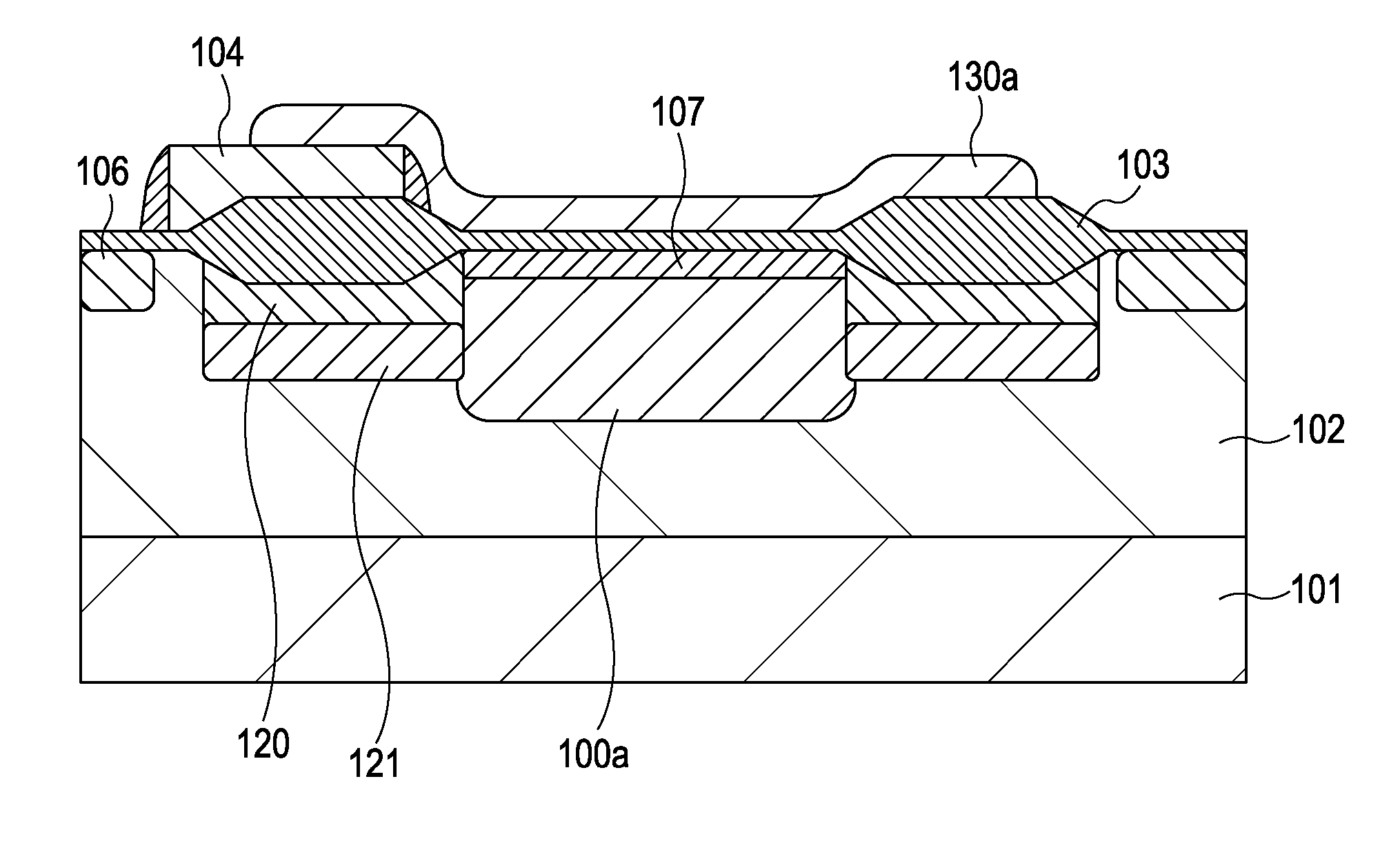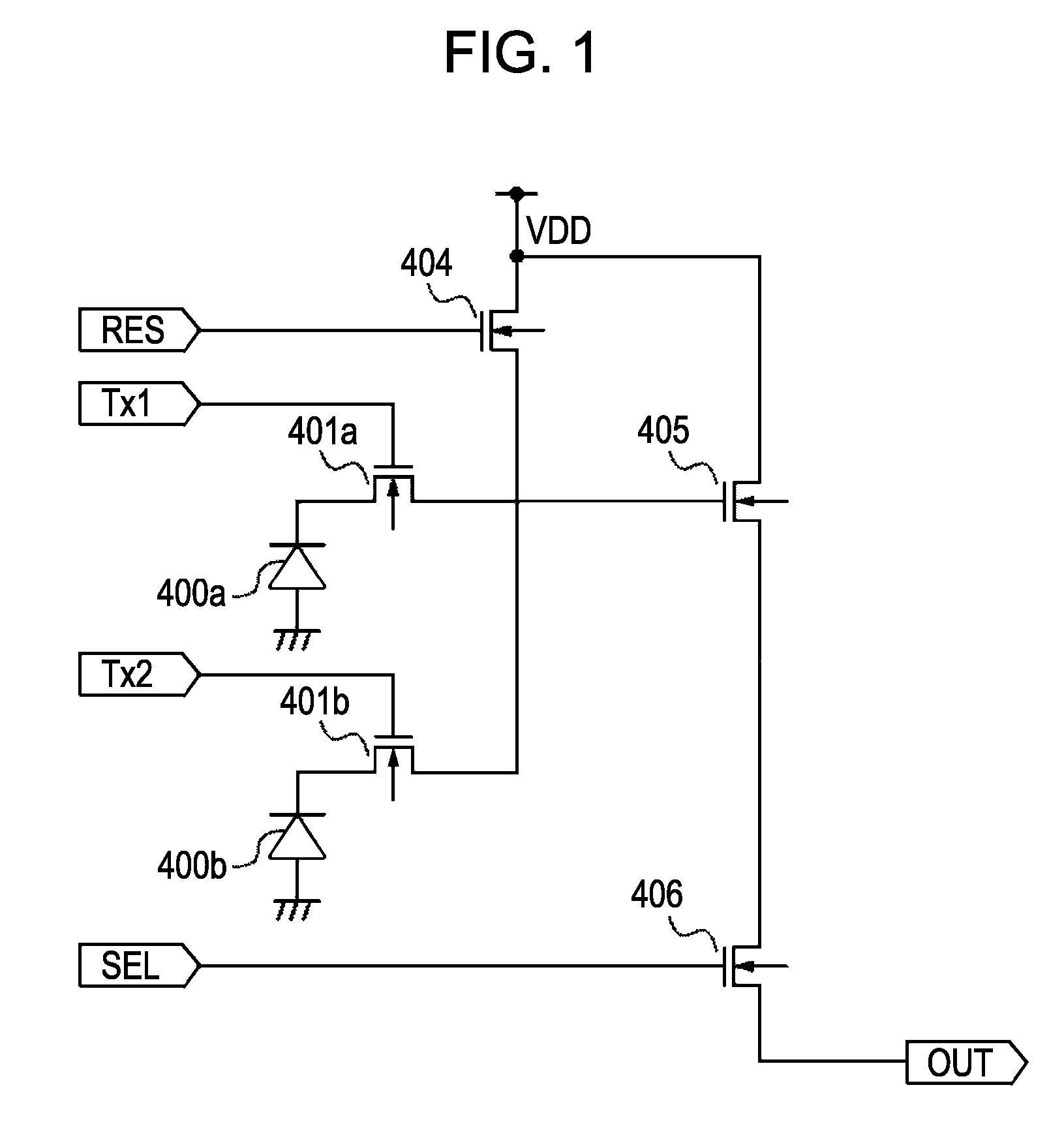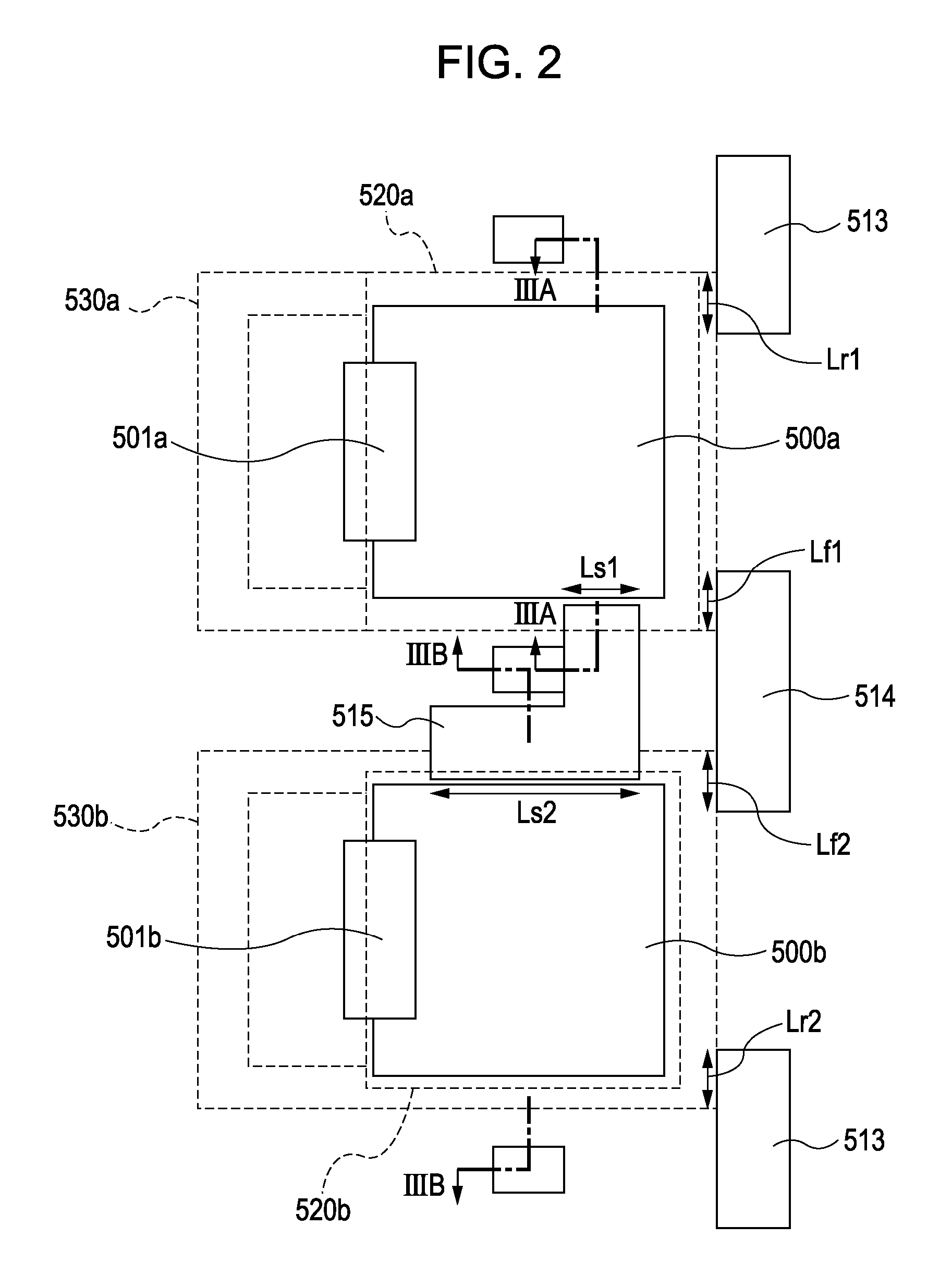Solid-state image pickup apparatus
a pickup apparatus and solid-state technology, applied in the field of solid-state image pickup apparatus, can solve the problems of difficult to make the length of the gate electrode of the transistor, difficult to make the area of the gate electrode that is oriented to each other after processing, and complicated driving-related timing, etc., to reduce the difference in dark current.
- Summary
- Abstract
- Description
- Claims
- Application Information
AI Technical Summary
Benefits of technology
Problems solved by technology
Method used
Image
Examples
first embodiment
[0028]FIG. 1 is a diagram illustrating an equivalent circuit of a solid-state image pickup apparatus according to a first embodiment. The solid-state image pickup apparatus includes a first photoelectric conversion element 400a and a second photoelectric conversion element 400b, which are photodiodes in this embodiment. In this drawing, only two photoelectric conversion elements are illustrated. However, a larger number of photoelectric conversion elements may be included in a solid-state image pickup apparatus according to this embodiment.
[0029]Transfer portions 401a and 401b for transferring the electric charge of a photoelectric conversion element are MOS transistors in this embodiment. A reset portion 404, for resetting the input portion of an amplification portion to be described later by setting the potential of a gate electrode of the amplification portion to a reference potential, is a MOS transistor in this embodiment. An amplification portion 405 for amplifying a signal co...
second embodiment
[0056]FIG. 4 is a plan view of a solid-state image pickup apparatus according to a second embodiment. FIG. 5A is a cross-sectional view taken along the line VA of FIG. 4, and FIG. 5B is a cross-sectional view taken along the line VB of FIG. 4. The same reference numerals are used to identify parts already described in the first embodiment, and the descriptions thereof will be therefore omitted. In this embodiment, the areas of antireflection coating films are the same, but the areas (widths) of channel stop regions are made to differ from each other. In this embodiment, the area of a channel stop region denotes an area in the top view of the channel stop region.
[0057]Like in the first embodiment, in this embodiment, the lengths of portions of respective gate electrodes of MOS transistors that face respective adjacent photoelectric conversion elements are different from each other. Referring to FIG. 4, the length of a portion of a gate electrode of each MOS transistor facing the firs...
third embodiment
[0060]FIG. 6 is a plan view of a solid-state image pickup apparatus according to a third embodiment. FIG. 7A is a cross-sectional view taken along the line VIIA of FIG. 6, and FIG. 7B is a cross-sectional view taken along the line VIIB of FIG. 6. The same reference numerals are used to identify parts already described in the first and second embodiments, and the descriptions thereof will be therefore omitted.
[0061]In this embodiment, a case in which a period during which a voltage lower than that in the first and second embodiments (non-conducting voltage) is applied to a gate electrode is long in the accumulation period of a photoelectric conversion element will be described. For example, during the whole accumulation period of each photoelectric conversion element, a voltage for bringing a MOS transistor out of conduction is applied to the gate electrodes of a plurality of MOS transistors. These MOS transistors are disposed for each photoelectric conversion element, and include a ...
PUM
 Login to View More
Login to View More Abstract
Description
Claims
Application Information
 Login to View More
Login to View More - R&D
- Intellectual Property
- Life Sciences
- Materials
- Tech Scout
- Unparalleled Data Quality
- Higher Quality Content
- 60% Fewer Hallucinations
Browse by: Latest US Patents, China's latest patents, Technical Efficacy Thesaurus, Application Domain, Technology Topic, Popular Technical Reports.
© 2025 PatSnap. All rights reserved.Legal|Privacy policy|Modern Slavery Act Transparency Statement|Sitemap|About US| Contact US: help@patsnap.com



